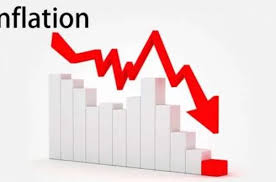Inflation in Ghana has seen a slight decline in January 2025, dropping from 23.8 percent in December 2024 to 23.5 percent.
This marginal reduction suggests some stability in the economy, though concerns remain about rising food prices and the cost of imported goods. The latest inflation data reflects mixed trends, with food inflation continuing its upward trajectory while non-food inflation and locally produced goods experienced a decline.
One of the key highlights of the January 2025 inflation report is the continued increase in food inflation. Food prices surged from 27.8 percent in December 2024 to 28.3 percent in January 2025, further straining household budgets. The persistent rise in food inflation suggests ongoing supply chain constraints, weather-related disruptions, and potential pricing inefficiencies in the agricultural sector.
Among the divisions that recorded high inflation, food and non-alcoholic beverages stood at 28.3 percent, reflecting how food costs remain one of the biggest drivers of inflation. Additionally, alcoholic beverages, tobacco, and narcotics recorded an inflation rate of 27.2 percent, indicating that consumers are paying more for these products.
Non-Food
In contrast to rising food inflation, non-food inflation witnessed a decline, falling from 19.2 percent in December 2024 to 18.4 percent in January 2025. This decrease indicates relative stability in the prices of goods and services outside the food sector. Housing, water, electricity, gas, and other fuels recorded an inflation rate of 24.6 percent, highlighting the significant impact of utilities and housing costs on inflation.
Inflation for locally produced goods also saw a slight improvement, dropping from 26.4 percent in December 2024 to 25.7 percent in January 2025. This suggests some relief for consumers relying on locally manufactured products. However, inflation for imported goods increased slightly, rising from 17.9 percent in December 2024 to 18.4 percent in January 2025. The uptick in imported inflation could be attributed to global supply chain disruptions, currency depreciation, or increasing costs of transportation and import duties.
Regional Disparities
Regional inflation trends in January 2025 revealed significant disparities across Ghana. The Western Region recorded the highest inflation rate at 49.9 percent, far above the national average. This suggests that the cost of living in the Western Region has surged significantly, possibly due to local economic factors, supply constraints, or sector-specific price pressures.
On the other hand, the Volta Region had the lowest inflation rate of 18.0 percent, reflecting a relatively stable pricing environment compared to other regions. The regional variations in inflation underscore the diverse economic conditions across the country, with some areas experiencing greater price pressures than others.
The marginal decline in inflation for January 2025 provides some optimism, but the persistent rise in food prices remains a major concern. Food inflation directly impacts household spending, especially for low-income families who allocate a significant portion of their income to food purchases. Policymakers may need to implement targeted interventions to stabilize food prices and enhance agricultural productivity to mitigate further increases.
Additionally, the continued increase in imported inflation suggests the need for strategies to strengthen the local currency and reduce reliance on imported goods. Promoting local production and improving supply chain efficiencies could help cushion the economy against external shocks.
In the meantime, Ghana’s inflation trajectory will largely depend on government policies, global economic conditions, and local market dynamics. While the slight drop in inflation offers hope, addressing the persistent food inflation challenge will be crucial in ensuring sustainable economic stability for the country.
All in all, the marginal decline in Ghana’s inflation rate for January 2025, from 23.8 per cent to 23.5 per cent, presents a mixed outlook for the country’s economic stability. While non-food and locally produced items saw inflation declines, rising food and imported goods inflation remain concerns. Additionally, sectoral and regional variations suggest that inflation management strategies need to be more targeted and region-specific.


Comments are closed.